What is the Internet of Things?
Data is being gathered all around us all the time, whether it be a weather station monitoring rainfall, streetlamps that turn on when the light level gets too low or carbon dioxide levels in urban areas. The Internet of Things, so to speak, joins the dots. Increasingly that data is being stored in the cloud so that machines can inform each other of data gathered in other locations and so that anyone can access the data all over the world.
The potential impact of this on the way we interact with the world around us is huge. The sheer volume of data that can be collected and shared has enormous potential well beyond the capabilities of individuals gathering data alone and will connect us to each other not only in the virtual world but in the physical world as well.
What does it mean for education?
Thanks to the Internet of Things investigations are no longer limited to the four walls of a classroom. Where previously students might have carried out an investigation into energy consumption on a model circuit they can now use sensors to measure the actual energy consumption in their own classroom. That data can then be shared with other schools and analysed as part of a much wider data set, turning an experiment contrived solely for learning purposes into a chance to explore live data in the real world.
We started to explore the power of the Internet of Things in education through the collaborative Project Distance in the UK which has led on to further similar projects in Peterborough and Singapore.
What does it mean for you?
The Internet of Things is bringing about a data democracy as increasingly everyone can access it through portals such as Thingful, the first Internet of Things search engine. You no longer need to have access to specialised equipment to monitor the weather if you can plug into live data sources through the cloud. Applications that unlock this potential are being developed thick and fast. For example the BuggyAir project we are involved in, will enable parents and carers to attach air pollution sensors to a buggy and measure the pollution levels as they walk. The data obtained would make parents more aware of the local pollution level and how it might be affecting their children.

